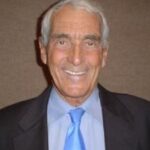Review of Not Dead Yet: My Race Against Disease: From Diagnosis to Dominance, by Phil Southerland and John Hanc, Thomas Dunne Books, $17.00
Part memoir, part sports adventure, Not Dead Yet tells the inspirational story of Phil Southerland’s battle with Type 1 diabetes. From diagnosis to determination, he beat the odds and turned his disability and passion for bicycling into a stage from which to educate the millions of diabetics around the world that they can live whatever life they choose.
It is an inspiring story, and it represents an important lesson in personal responsibility for our individual health.
Phil explains his motivation for writing the book: “Imagine if you had to check your heart rate or blood pressure twenty times a day. Imagine knowing that if, for some reason, those levels changed, you could suddenly fall unconscious on a crowded city street, or behind the wheel of your car, or off a bike on a lonely country road. Imagine having to make sure you carried around with you at all times the diagnostic equipment and drugs needed to prevent such things from happening, and that everyone around you was trained and prepared to inject or force feed you some life saving medicine in case you did pass out. Imagine a life where taking conscious, deliberate actions to stay alive, is well . . . a way of life, the focus of much of your day. Welcome to my life.”
Phil’s life story is full of lessons on the importance of personal courage, and what it means to refuse to let a disease stop his dreams.
Living an Active Life
Growing up with diabetes in a dysfunctional family, Phil sought sports as an outlet for which he became totally passionate, while achieving acceptance among others who often knew nothing of his disability. He began bicycle racing at 14, first on mountain bikes then on road bikes. His description of his first 12 hour road race is worth the price of the book.
A turning point his life came when he attended his first summer camp for type 1 diabetics and recognized the despair that grips so many of them. He realized that he accepted his disease as an ongoing challenge, whereas others wondered why they were so unlucky.
With the support of a good endocrinologist, Phil learned he could both control his diabetes and become a cycling champion, something deemed unacceptable by his earlier physicians. By his senior year in high school he had become a top category licensed bike racer.
Championship Team
He chose the University of Georgia as his college—it was not too far from his home in Tallahassee and it was known as a great bicycle racing center. He was able to do well in college while feeding his cycling passion.
It was there that he met another bicycling type 1 diabetic, Joe Eldridge. Together, they formed the idea for a racing team, started as a business class project which eventually grew to a team of eight diabetic cyclists to tackle the famous 3,000-mile Race Across America (RAAM).
Phil’s supporters—his mother, support drivers, sponsors, and even strangers—came together to help the team achieve incredible things. His team was able to cycle 3,021 miles in five days and nine hours, changing cyclists nearly every 10 minutes so they could be in a full-out sprint every mile of the journey. Sometimes they rode less than five minutes at a time when traveling up over the Rockies and Appalachians, with stress-inducing changeovers under the eyes of an official in a tracking car.
The whole story is as good as any action-adventure thriller you could read. By the end, his team had beat 10 non-diabetic teams, whose challenge was just the road, not a disease as well.
Global Educators on Diabetes
The victory led to speaking engagements all across the country, more funding, and eventually the enlistment of more cyclists and triathletes. Their 2006 victory was followed by wins in 2007, 2009, and 2010. Today, Team Type 1 consists of seven different teams of athletes, including one member who was in this year’s Tour de France.
Team Type 1 has become involved in diabetes care on a global level, forming a partnership with the International Diabetes Federation and working on their Life for a Child program for juvenile diabetics around the world. Their goal is to provide insulin, blood sugar meters, and test strips to the 74,000 children with type 1 who are getting insulin on a regular basis. Not bad for something dreamed up by college kids.
I can speak personally about the effect of this. Phil’s story played a large part in motivating my son Tom, who developed type 1 diabetes at the age of 28, to keep his diabetes under control and become an ironman triathlete. He eventually became a member of the cycling team, and he now manages and competes with the Type 1 Triathlon Team.
Thanks to stories like these, diabetics can realize they can put their disease in its place, and parents can learn to stop bemoaning the “bad break” their child has been handed. For the diabetics you know, this book could very well change their lives, eliminating any self pity they may feel and helping inspire them to live any life they choose.





